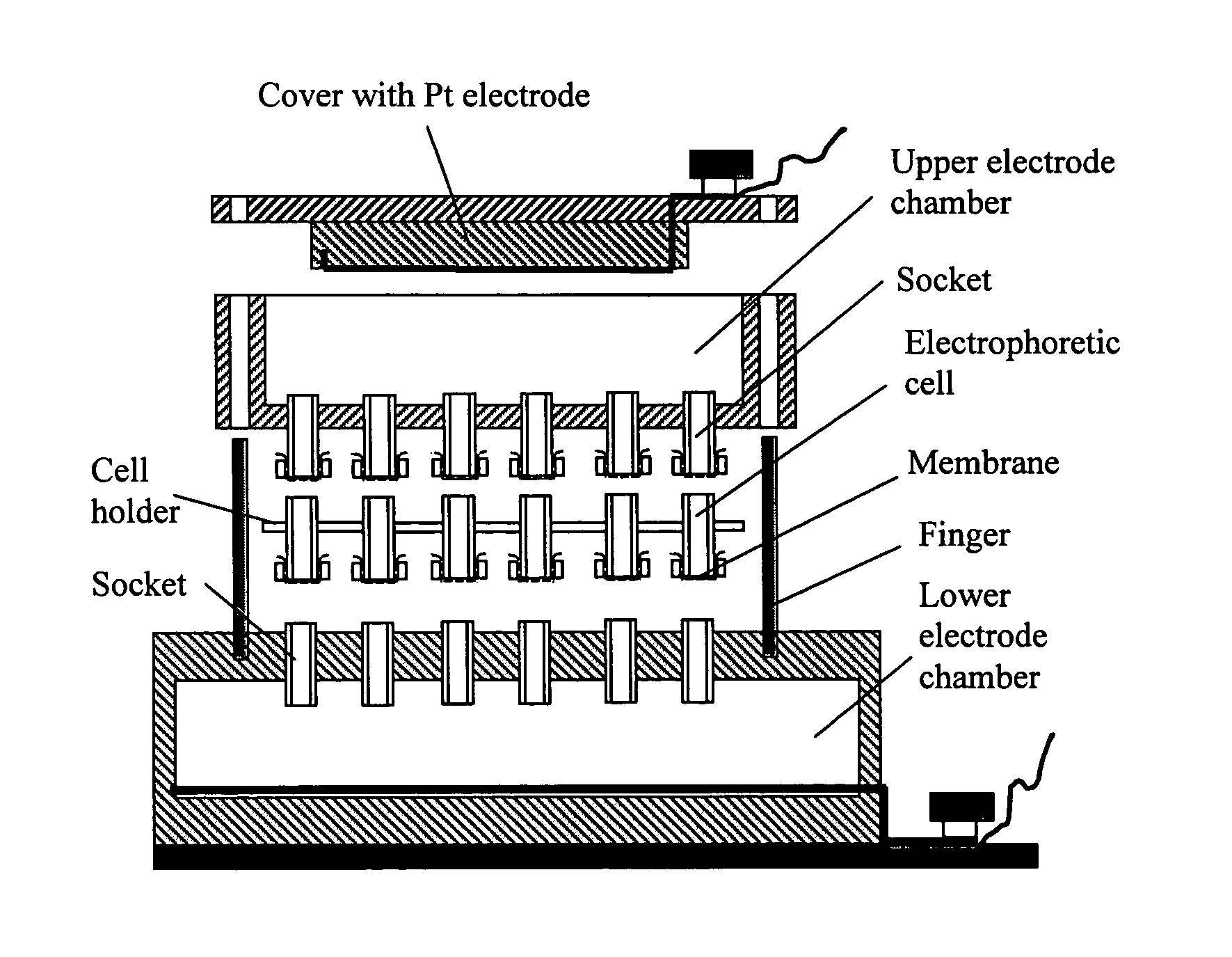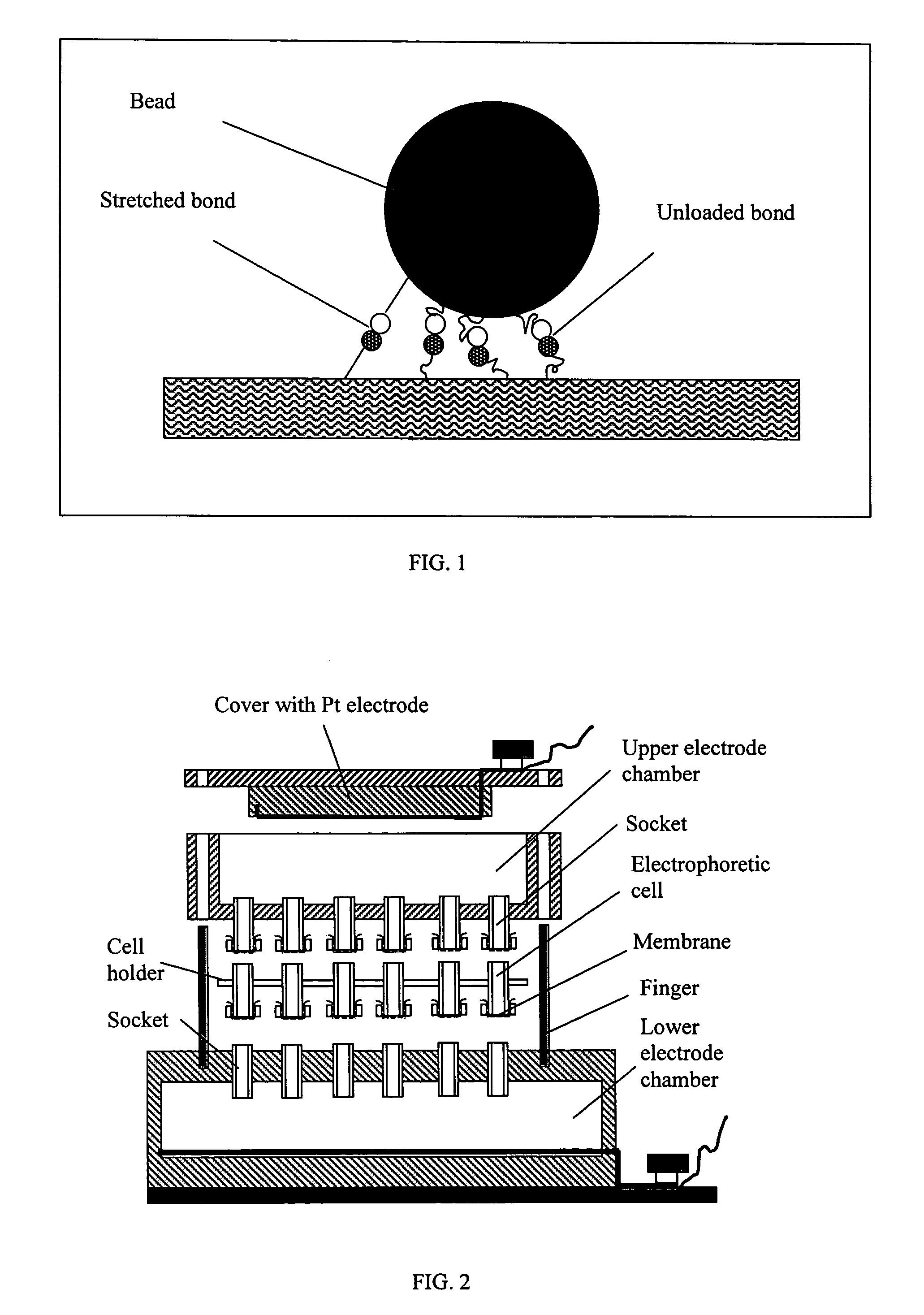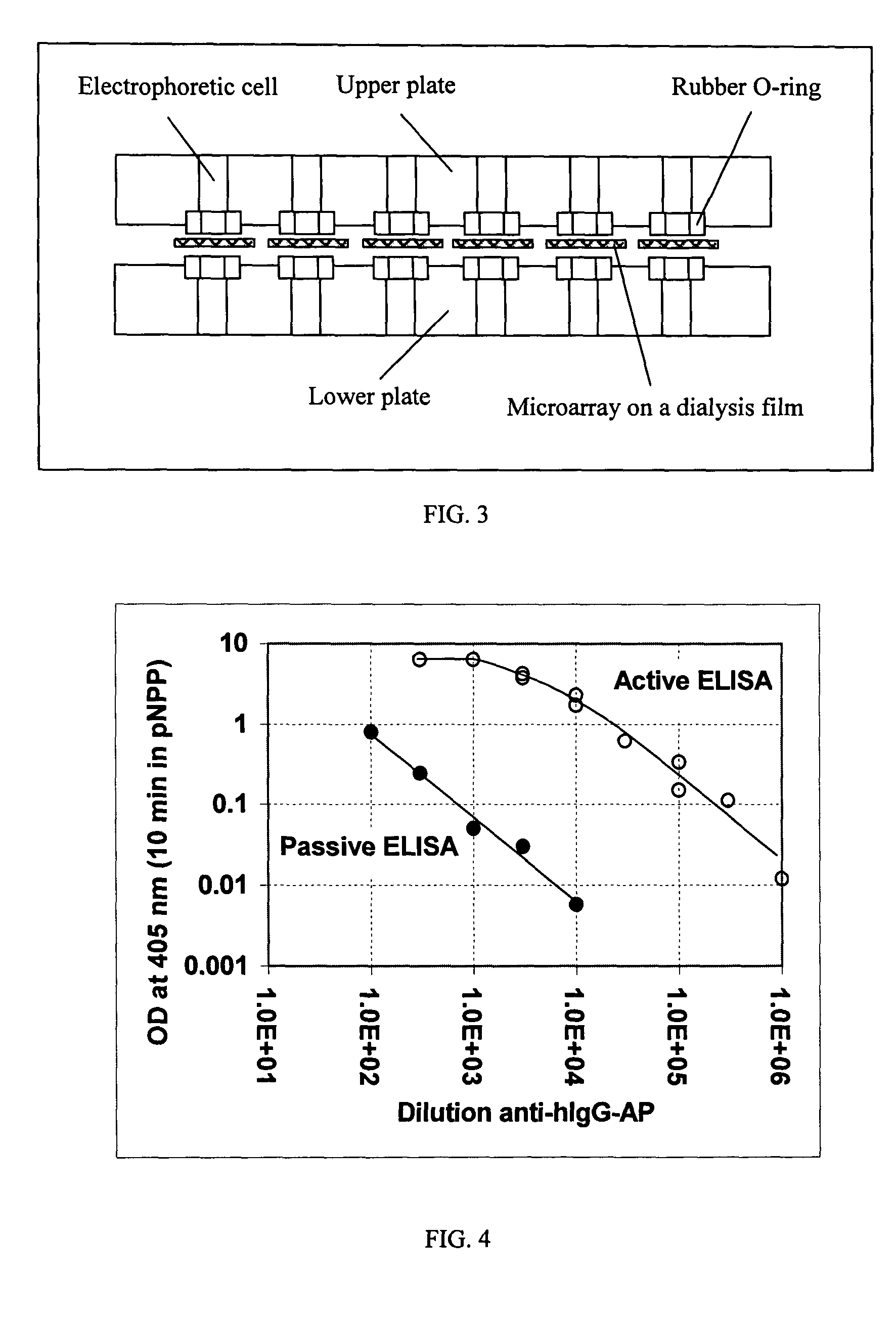Methods and devices for active bioassay
a bioassay and active technology, applied in the field of active bioassay methods, can solve the problems of limited assay time and inability to solve the problem completely, and achieve the effect of reducing background and increasing bioassay sensitivity
- Summary
- Abstract
- Description
- Claims
- Application Information
AI Technical Summary
Benefits of technology
Problems solved by technology
Method used
Image
Examples
example 1
Electrophoretic Acceleration of the Reaction in the Standard Elisa and Suppression of Convection
[0217]This example illustrates that electrophoretically enhanced ELISA increases the rate of signal formation and provides increased signal levels for very low concentrations of probe.
[0218]Electrophoretic Acceleration of the Reaction in the Standard ELISA.
[0219]A simple device was designed as illustrated schematically in FIG. 2. It includes upper and lower electrode chambers and electrophoretic cells. The lower chamber has an array of open outlets electrically connecting electrophoretic cells with the lower chamber. The upper electrode chamber has also array of outlets. These outlets are covered with a dialysis membrane to prevent leakage of buffer and to allow electric current to pass. Different types of the electrophoretic cells were tested with this basic device. Some of them were made of standard 0.7 mL Eppendorf tubes with their bottom parts and the cover caps cut off. Dialysis film...
example 2
Device for Performing Electrophoretically Assisted ELISA
[0238]This example illustrates a device that can be used to perform an electrophoretically-assisted ELISA assay. An apparatus schematically presented in FIG. 8 allows to simultaneously run 96 independent active assays. Electrophoretic micro-plate was manufactured from a commercial CellScreen plate (Millipore) in which microfilter membranes was removed with a sand paper and replaced with dialysis membranes from regenerated cellulose (Sigma product). The plate was treated in plasma discharge for 50 sec. Dialysis membrane was also treated in plasma discharge for 30-50 sec. Cyanoacrylate glue was evenly distributed over the edges of wells, the membrane was firmly pressed to the wells and allowed to settle for 3-5 min. To prevent deposition of cyanoacrylate vapor onto the membrane, a flow of air was directed into each well via array of sockets prepared from standard 0.2 mL tips. The glued membrane was cut between the wells to reduce...
example 3
Enhanced Sensitivity in the Electrophoretically Assisted ELISA as Compared to ELISA in Commercial Microplates
[0240]This example illustrates that electrophoretically-assisted ELISA provides increased sensitivity. In this example electrophoretically-assisted ELISA was performed using the apparatus described in Example 2 and protocol described in the Example 1. FIG. 9 presents a comparison of the active assay with the standard assay on a commercial polystyrene microplate. The data presented in FIG. 9 clearly demonstrate that active ELISA is substantially more sensitive as compared with the standard ELISA performed under the most optimal conditions (long time of coating and reaction, optimal pH and salt composition in the reaction buffer).
PUM
| Property | Measurement | Unit |
|---|---|---|
| angle | aaaaa | aaaaa |
| Dissociation constants | aaaaa | aaaaa |
| Dissociation constants | aaaaa | aaaaa |
Abstract
Description
Claims
Application Information
 Login to View More
Login to View More - R&D
- Intellectual Property
- Life Sciences
- Materials
- Tech Scout
- Unparalleled Data Quality
- Higher Quality Content
- 60% Fewer Hallucinations
Browse by: Latest US Patents, China's latest patents, Technical Efficacy Thesaurus, Application Domain, Technology Topic, Popular Technical Reports.
© 2025 PatSnap. All rights reserved.Legal|Privacy policy|Modern Slavery Act Transparency Statement|Sitemap|About US| Contact US: help@patsnap.com



